Marijuana is the most popular illicit/illegal drug in the U.S. among both younger and older people. In some cases, people who consume marijuana may also be active participants in other forms of drug use.
In a study published in September 2014 in the Journal of Addictive Diseases, a team of American researchers explored the connection between marijuana use and the intake of other drugs among young people transitioning from adolescence into early adulthood. These researchers concluded that daily consumers of marijuana in this age range are statistically more likely to also use additional drugs.
Stats On Marijuana, Older Teens And Young Adults
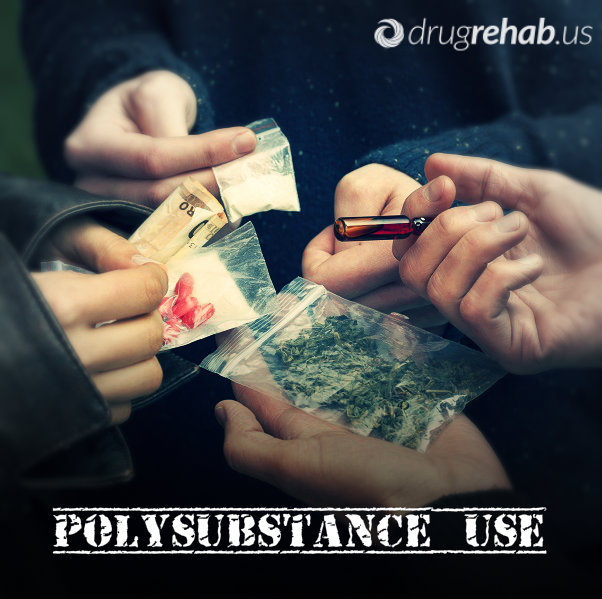 Approximately 19 million Americans over the age of 11 consume at least some amount of marijuana in a typical month, according to 2012 figures compiled through a federal project called the National Survey on Drug Use and Health.
Approximately 19 million Americans over the age of 11 consume at least some amount of marijuana in a typical month, according to 2012 figures compiled through a federal project called the National Survey on Drug Use and Health.
All told, users of this cannabis product account for close to 80 percent of the nation’s entire population of illicit/illegal drug users. Roughly 63 percent of the nation’s illicit/illegal drug consumers only use marijuana, while the remainder of marijuana users also consume at least one other drug.
Teenagers over the age of 15 and young adults under the age of 26 have the highest monthly rates for marijuana intake. Approximately 14 percent of 16- and 17-year-olds consume some quantity of the drug in the average month. The monthly rate of marijuana use rises to nearly 19 percent in older teens and younger adults between the ages of 18 and 25. Roughly 7.6 million American teens and adults qualify as daily marijuana users by consuming the drug at least 20 days a month. In addition, roughly 5.4 million American teens and adults consume marijuana at least 300 days a year.
Polysubstance Use
Marijuana users who also consume other drugs participate in a form of substance use commonly known as polydrug or polysubstance use. As a rule, polydrug users have heightened chances of experiencing the damaging effects associated with the substances they consume.
Damaging Effects Of Polysubstance Use
These effects include:
- overdoses
- serious changes in cardiovascular (heart and blood vessel) function
- serious changes in lung function
- significant body temperature alterations
Serious changes in mental function can also occur that may qualify as symptoms of mental illnesses such as:
- major depression
- anxiety disorders
- psychosis-related disorders
Examples of additional substances sometimes consumed by marijuana users include the stimulant cocaine, methamphetamine or other stimulants, opioid drugs or medications, inhalants, sedative-hypnotic medications (i.e., tranquilizers and sleep medications) and hallucinogens.
Drugs Linked To Marijuana Use
In the study published in the Journal of Addictive Diseases, researchers from Brown University, Brown-affiliated Butler Hospital and the Veterans Administration used an examination of 1,075 people transitioning from adolescence to adulthood to determine the forms of polysubstance use most likely to occur among marijuana users in their late teens or very early 20s.
During interviews with the researchers, each of these study participants submitted information on his or level of involvement in marijuana use, as well as his or her level of involvement in the use of cocaine, stimulants other than cocaine, opioid drugs or medications, sedative-hypnotic medications, hallucinogens and/or inhalants. T
he researchers also gathered background information on such factors as each participant’s demographic profile (age, racial/ethnic ancestry, gender, etc.) and level of involvement in binge drinking.
Some of the young people enrolled in the study qualified as daily marijuana users, while others did not. After completing their analysis, the researchers concluded that daily consumers of the drug are substantially more likely than other people in the same age range to consume:
- cocaine
- non-cocaine stimulants
- inhalants
- opioid drugs and medications
- nicotine/tobacco
This finding holds true even when considerations such as demographic profile and level of binge drinking involvement are taken into account.
Based on their findings, the study’s authors concluded that daily marijuana users are unusually likely to participate in polysubstance use during the transition between adolescence and early adulthood. They also concluded that these daily consumers of the drug may have increased chances of experiencing notably negative health outcomes.
It’s important to note that, even in the absence of polysubstance use, daily marijuana use has clearly negative health impacts. For example, figures compiled by the National Institute on Drug Abuse indicate that roughly one-quarter to one-half of all daily consumers of the drug will eventually merit a diagnosis of cannabis addiction (part of a larger condition called cannabis use disorder).
Do You Or Someone You Love Need Help Overcoming Marijuana Addiction?
Learn More About Marijuana Rehab Treatment – Turn A Life Around Today!
It’s important to have difficult discussions with your children. Talking to them about the birds and the bees, heartbreak, peer pressure and other life challenges is necessary because it helps them understand how to make better choices. It also builds a close and trusting relationship between you and them. One of those important conversations should be about substance abuse. If you’re like most parents, you want to tell them to never even try drugs, but what if you used drugs when you were younger? Do you confess? And if so, how do you do it without sounding like a hypocrite?
To Tell Or Not To Tell
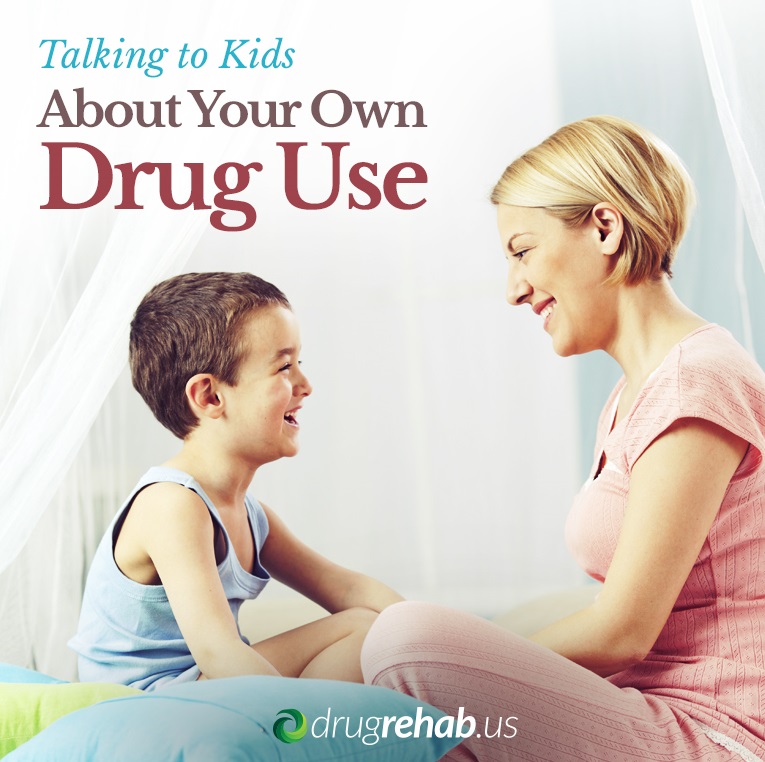 The first thing to consider is whether or not you will disclose your past with drug abuse or addiction. You don’t have to, but know that they could find out another way. Ask yourself how your kids will feel if they learn that you abused drugs from someone else. Age appropriateness is another important consideration.
The first thing to consider is whether or not you will disclose your past with drug abuse or addiction. You don’t have to, but know that they could find out another way. Ask yourself how your kids will feel if they learn that you abused drugs from someone else. Age appropriateness is another important consideration.
Maybe you feel it is important to tell your children. Make sure you wait until your children are at the appropriate age and maturity level to hear about this. No one can tell you if you should or should not tell your kids about your past drug use. The choice is personal and should be made with your children’s best interests in mind.
Tips When Talking To Your Kids About Drug Abuse
If you have made the important choice to talk to your kids about your drug use in the past, there are some things you should keep in mind. Be prepared and be thoughtful. This is not a discussion to rush into or to have without giving it much thought.
Here are some tips to help you make the conversation a successful one:
- Spare the details – Your children don’t need to hear every sordid detail of your past. Be prepared to be honest and to answer their questions thoughtfully and openly, but you don’t have to make it a tell-all. Knowing too much detail will probably only upset your children.
- Talk about negative consequences – As you talk about what you did in your past, put emphasis on the negative consequences. Talk about how drug abuse disrupted your life or about any narrow escapes you had. Remember that the point of this talk is not to share your personal story, so much as to deter your children from trying drugs.
- Listen – This should be a conversation, not a lecture. Once you have explained what you want your kids to know, let them talk and ask questions. Your children always appreciate when you really listen to them. If they don’t have much to say in the moment, ask them questions or encourage them to think about it and come back to you with questions later.
- Remain calm – This conversation is bound to stir up unpleasant memories and feelings. Do your best to keep your emotions in check and to stay calm. Don’t lose your temper, no matter how your children react. And if the discussion takes a bad turn, bring it to a close and return to the topic later, when everyone has cooled down.
Talking to your kids about drug abuse is never easy. If you have a past history of drug use the conversation becomes much more challenging. Remember that the main point of the conversation is to encourage your children to make the right choices and to not use drugs. When parents tell their kids not to use drugs, they listen and are more likely to make those good choices. Have this conversation sooner so that your kids are equipped with the right information to make the best decisions about drugs.
Call Us Now To Speak To Our Professional And Caring Staff!
Buprenorphine is a drug that can be used to treat opioid addiction. It comes in two formulations called Subutex and Suboxone. Although these medications are designed and prescribed to help people overcome addiction, some people abuse them to get high. If you love someone battling opioid addiction, pay close attention and make sure he is not abusing the medication that is supposed to be helping him heal.
What Is Buprenorphine?
Buprenorphine is a synthetic opioid drug that blocks withdrawal symptoms. When the addict takes it, he can stop using heroin or painkillers without experiencing the withdrawal that leads many addicts back to substance abuse. Subutex contains buprenorphine alone and is supposed to be used first and for a short period of time. Suboxone includes a second drug, naloxone, which is intended to prevent abuse. It blocks the high that buprenorphine can impart to the user and is designed to be used after Subutex.
Can Someone Abuse Buprenorphine?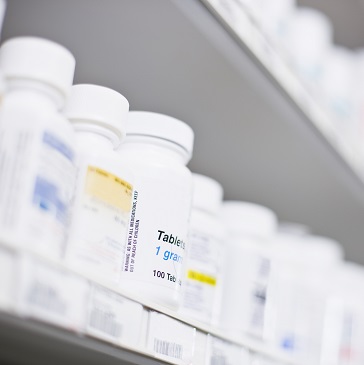
Buprenorphine was the first medication that the Food and Drug Administration allowed to be dispensed from doctors’ offices thanks to its successes in treating opioid addicts. Not all stories of buprenorphine use have been good, though. Some people have abused the medications, and although it is supposed to be impossible to overdose on, there have been deaths associated with Suboxone and Subutex abuse.
It is more difficult to get a high from buprenorphine, and also more difficult to overdose, than other opioids. It is possible, though, and some abusers are desperate enough to use this medication like an illegal drug. Dealers are making a killing selling black market buprenorphine, both to people wanting to abuse it and those wanting to use it as a treatment.
How Can I Tell Someone Is Abusing Buprenorphine?
It is important that you are vigilant with your loved one who has been prescribed buprenorphine. Not everyone realizes that there are risks associated with abusing it. Many are told that you can’t overdose on it, but this isn’t true. Make sure your loved one understands this risk and watch out for signs that he has started abusing his medication.
If you have lived with a drug addict you already know what many of the signs of abuse are. Maybe he has started:
- sleeping more
- missing days of work
- borrowing or stealing money
- having mood swings that seem inexplicable
Watch out for all the usual signs of drug abuse that you have seen before. If he starts acting like he used to when he was using, you should be concerned.
There are also specific symptoms associated with abusing buprenorphine medications. Side effects of the drugs that are possible include:
- flu-like symptoms
- sweating
- headaches
- mood swings
- nausea
- difficulty sleeping
Watch for indications that any of these are getting worse. If he is using more of the medication than directed, the side effects could be intensified. Other signs may include:
- hair loss
- emotional instability
- apathy
- a loss of interest in sex
- watery eyes
- muscle pains and cramping
- impaired memory
- depression or anxiety
Buprenorphine can be a powerful aid in helping opioid addicts get clean and stay clean, but there are risks that are often overlooked. As someone who loves an opioid addict, you should encourage him to use all the tools at hand to beat his addiction, including buprenorphine. But you should also be careful and look for signs that he has turned to his prescription medication for a high. If he has, confront him with love, understanding and patience, and help him to get back on the road to recovery.
If You Or Someone You Love Is Struggling With Addiction – Call Us Now – We Are Here For You 24/7
A recent study from the University of California, San Diego (UCSD) found that men infected with HIV who use methamphetamine may experience faster T-cell activation and proliferation. In other words, the use of methamphetamine may cause HIV to progress more rapidly to AIDS.
Who Was Studied?
 The study looked at 50 men who have sex with men (MSM). The average age of the participants was 46, and each had been on retroviral medication for HIV for an average of four years. Forty-two percent of the participants were white, 20 percent were black and 4 percent were Hispanic.
The study looked at 50 men who have sex with men (MSM). The average age of the participants was 46, and each had been on retroviral medication for HIV for an average of four years. Forty-two percent of the participants were white, 20 percent were black and 4 percent were Hispanic.
Once a month for a year, the study participants completed a survey about their adherence to antiretroviral treatment and their use of various party drugs. Twenty of the men reported using marijuana during the study period, 16 used meth, 12 reported drinking alcohol, 11 used cocaine and 13 of the respondents used some other party drug.
The researchers also used frozen samples of a type of blood cell with a round nucleus known as peripheral blood mononuclear cells (PBMCs) to evaluate reservoirs of HIV DNA, cellular HIV RNA, and the activation and proliferation of immune cells named CD4 and CD8 (sometimes known as T-helper cells or T cells). HIV binds itself to CD4 cells, which multiply in order to help combat infection. In this way, the immune system actually makes more copies of the virus it is trying to destroy.
What The UCSD Study Found
The UCSD study found that the men who used meth had higher levels of activated and proliferating CD8 and CD8 cells, poorer CD4/CD8 ratios, and greater reservoirs of HIV DNA that had been incorporated into the genetic material of a host cell—proviral HIV DNA.
The study also found higher cytomegalovirus (CMV) load and shedding in the semen of meth users. While HIV is a sexually transmitted disease (STD), and sexual activity remains the leading cause of HIV transmission around the world, levels of HIV in the semen of an infected man are actually lower than the levels of HIV in the blood. However, HIV levels in semen are higher in a subgroup of men, and the UCSD study found that HIV levels in semen were more likely to be high in the men who used meth. A higher level of HIV in semen makes it more likely that an infected man could transmit the disease through unprotected intercourse. Previous studies have found that HIV transmission among meth users occurs at a higher rate than among other HIV-positive individuals.
Although the participants in this study reported a variety of recreational drug use, meth was the only drug that appeared to have any significant influence on T-cell activation and proliferation, and on levels of proviral HIV DNA.
In order to eliminate variables that could also explain the difference in the progression of HIV, the researchers selected MSM of a similar age, with similar baseline CD4 and CD8 counts, who had spent a similar amount of time on antiretroviral medications, and who were not infected with any other STDs that could contribute to the worsening of their HIV.
Researchers do not yet understand why the use of methamphetamine could speed the progression from HIV to AIDS or increase cognitive impairment among men with HIV. One possibility is that meth use corresponds with difficulty sticking to a regimen of anti-viral medication (although the men in this study who used meth reported similar rates of adherence as non-meth users). Risky behaviors common to meth users may also have something to do with speeding health deterioration among men with HIV.
However, the fact that the other recreational substances used by men in the study did not affect their HIV makes it somewhat less likely that risky behaviors associated with drug use will successfully explain the way meth affects HIV. It may be that there is some physiological cause and effect through which meth use directly promotes AIDS progression and increased cognitive deterioration.
If you or someone you love is struggling with a drug or alcohol addiction – Call us now – Help is available 24/7…It’s worth it!
Stimulants are drugs that increase your metabolism, heart rate and blood pressure. They make you feel alert, keep you awake, can help you focus, and may cause you to lose your appetite and lose weight. Among drugs that are abused, the amphetamine class of stimulants is both popular and dangerous. In terms of methamphetamine vs. amphetamine, it can be difficult to distinguish between the two, yet there are important differences.
Amphetamine and methamphetamine are prescriptions that help many people, but which also have a high potential for abuse. Another member of this class of drugs, methcathinone, has no clinical use, but has been discovered by abusers and is growing in popularity. It is important to learn about these common, but dangerous stimulants, especially if you are the parent of teens.
Amphetamine vs. Methamphetamine
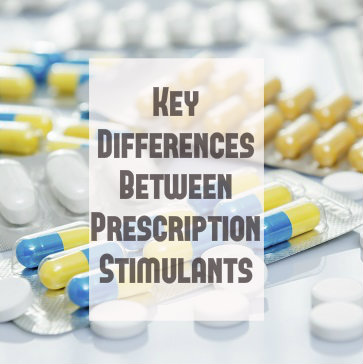 Amphetamine is a stimulant drug from which all other members of its group are derived. It is the base drug. As a stimulant, amphetamine acts on the central nervous system. It is most often prescribed for children with ADHD. It helps them to focus. Amphetamine is commonly abused by high school and college students as a study aid. It produces wakefulness and focus, which makes it a desirable tool for studying long hours. The risks, however, are great. Amphetamine causes side effects like nausea, headaches, shaking, insomnia, nervousness and more. It is also highly addictive.
Amphetamine is a stimulant drug from which all other members of its group are derived. It is the base drug. As a stimulant, amphetamine acts on the central nervous system. It is most often prescribed for children with ADHD. It helps them to focus. Amphetamine is commonly abused by high school and college students as a study aid. It produces wakefulness and focus, which makes it a desirable tool for studying long hours. The risks, however, are great. Amphetamine causes side effects like nausea, headaches, shaking, insomnia, nervousness and more. It is also highly addictive.
Methamphetamine is similar to amphetamine. Like amphetamine, it is a stimulant that increases wakefulness and alertness. It is less often prescribed for ADHD and in rare cases can be used to treat obese patients. Methamphetamine is prescribed less often than amphetamine because it is more harmful. It can cause lasting damage in the brain with long-term use and is extremely addictive. Because prescriptions for methamphetamine are scarcer, users often get it from amateur meth labs. Abusers of meth use it to get a high rather than to study.
Methcathinone vs. Methamphetamine
Another member of the amphetamine stimulant class of drugs, methcathinone, is similar to methamphetamine. Unlike meth, however, it has no clinical use. It is a Schedule I drug in the U.S. because it is dangerous and addictive. It is not prescribed to treat any medical conditions. Methcathinone is chemically very similar to methamphetamine and is also a stimulant.
Like both amphetamine and methamphetamine, methcathinone suppresses the appetite, increases wakefulness, heart rate and energy, and produces alertness in the user. The sense of euphoria that also comes with taking the drug is the main reason people abuse it. The feeling is described as being less intense than that imparted by methamphetamine. As with methamphetamine, methcathinone causes long-term damage and is highly addictive.
All members of the stimulant class of drugs have potential for abuse, but amphetamine, methamphetamine, and increasingly methcathinone are among the most common. Teens and young adults are often drawn to these drugs for either the high, the potential for a study aid, or both. Adults and parents should be aware of these drugs and the harm that they can cause.
If You Or Someone You Love Is Struggling With Stimulant Abuse, Call Us Now – Help Is Available 24/7
Depression can be a very serious mental health condition. People struggle with depression to varying degrees. For some it is a lifelong battle, while for others it comes on as the result of life situations but is temporary. In any type of depression, self-medication is common but ill advised. Self-medication is the use of drugs or alcohol to mitigate symptoms. It is a dangerous and destructive practice, but not everyone who does it realizes the harm they are causing. If you or someone you love struggles with depression, look out for and avoid self-medicating.
Depression And Substance Abuse
Self-medicating is particularly common for depression. It mostly occurs in people who have not been diagnosed and are not getting professional treatment for depression. If you feel depressed, it is natural to turn to something that will either make you feel better, or that will at least numb that bad feeling. Most people reach for alcohol, but prescription drugs and illegal drugs are used as well for the self-medication of depression. The rates of substance abuse among people with either depression or anxiety are as high as 20 percent.
The Dangers Of Self-Medicating
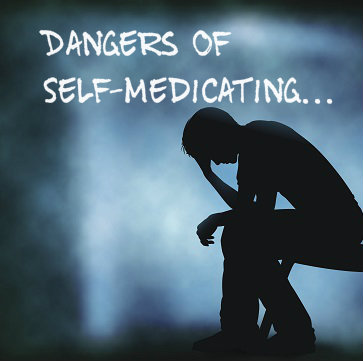 Self-medicating feelings of depression often work in the short term. It’s why so many people resort to it as a strategy for feeling better. Over a long period of time, however, doing so only causes more problems. Not least of these problems is the possibility of addiction. A dual diagnosis of depression and addiction is not uncommon. Relying on alcohol or drugs to make you feel better is a habit that leads to dependence. Your body will get used to the substance and you will find it difficult to quit.
Self-medicating feelings of depression often work in the short term. It’s why so many people resort to it as a strategy for feeling better. Over a long period of time, however, doing so only causes more problems. Not least of these problems is the possibility of addiction. A dual diagnosis of depression and addiction is not uncommon. Relying on alcohol or drugs to make you feel better is a habit that leads to dependence. Your body will get used to the substance and you will find it difficult to quit.
Another problem with self-medicating is that it never allows you to confront and deal with your depression. Drinking or using drugs is like a quick fix, but one that doesn’t last. It is not a permanent solution to your problems. Only treatment by health care professionals using therapy in combination with appropriate medication will provide you with lasting relief. In fact, research into teenage depression has found that self-medication can actually make a mental illness more serious.
How Can I Tell If Someone Is Self-Medicating?
If you’re worried that someone you care about may be struggling with depression and is self-medicating, act immediately. Be there for your loved one and offer your help. People often don’t realize that they are depressed. It is usually easier for others to see the signs.
First look for signs of depression:
- Feelings of hopelessness or loneliness
- Apathy
- Changes in sleeping habits
- Weight loss or gain
- Irritability or irrational anger
- Difficulty concentrating
- Reckless behaviors
- Unexplained aches and pains
If, in addition to seeing these signs in someone, you also see them using drugs or alcohol frequently or to excess, he or she is probably self-medicating for depression. Your loved one may try to hide drug use or drinking, which is another clear sign. Confront this person as soon as you can, but do so in a loving and compassionate manner and offer your help.
Depression is a complex mental illness. It afflicts many people, who often turn to substances for relief. Instead of drugging the problem, get help for yourself or your loved one. The care and treatment given by professionals is the right solution to coping with and living with depression. Self-medicating may feel right initially, but the good feeling won’t last. It will only make the condition and symptoms worse.
Learn More About Dual Diagnosis
If You Or Someone You Love Is Struggling With Mental Illness and/or Addiction – Call Us Now To Speak To A Recovery Advisor! We Are Here To Help!
24 Jun 2014
The Truth About Synthetic Marijuana
Synthetic marijuana dangers are very real and very serious. Although law enforcement has been able to crack down on much of the product, and policy makers have enacted laws to cut back on it, synthetic marijuana is still floating around on the illicit drug market. Many people believe that marijuana is a low-risk drug, especially as attitudes and laws regarding it begin to change. The real drug has its risks and harms, and so does the synthetic version. The truth behind this drug substitute is that it can cause real harm and can lead to addiction.
How Does Synthetic Marijuana Differ From The Real Thing?
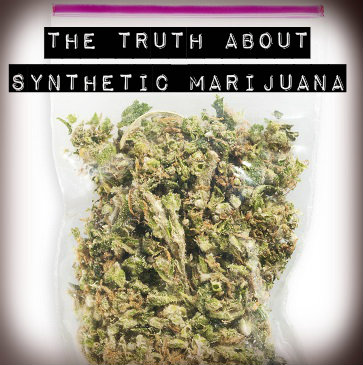 Real marijuana is the dried leaves, stems and seeds of a plant called cannabis. The plant contains psychoactive compounds called cannabinoids. Manufacturers of synthetic marijuana attempt to create compounds in a laboratory that are similar enough to the natural cannabinoids to give users the same high as the natural product. There are thousands of natural compounds and even more possibilities for synthetic alternatives. Most synthetic products consist of some type of dried plant material sprayed with a liquid containing the lab-made compounds.
Real marijuana is the dried leaves, stems and seeds of a plant called cannabis. The plant contains psychoactive compounds called cannabinoids. Manufacturers of synthetic marijuana attempt to create compounds in a laboratory that are similar enough to the natural cannabinoids to give users the same high as the natural product. There are thousands of natural compounds and even more possibilities for synthetic alternatives. Most synthetic products consist of some type of dried plant material sprayed with a liquid containing the lab-made compounds.
What Are The Health Effects Of Synthetic Marijuana?
When smoked, many of these synthetic products have a similar effect as natural marijuana. They can cause sleepiness and a pleasant sense of relaxation and happiness. Smoking real marijuana poses certain health risks, including aggravating or contributing to lung conditions. The synthetic products can be even more harmful. The reason for this is that the makers do not list everything that comes in their product. There could be any number of dangerous chemicals in it and not knowing what you are smoking is very risky.
Users have reported:
- panic attacks
- dizziness
- hallucinations
- shaking
- paranoia
- anxiety
- hot flashes
- convulsions
- periods of emotional instability
Is Synthetic Marijuana Addictive?
Marijuana is not one of the most addictive of all drugs, but it can be habit-forming, especially when used regularly and frequently. Users of synthetic products also report experiencing withdrawal and cravings when they try to stop. For this often-dubbed gateway drug, rehab is a solution to addiction. Even when an addiction is not full blown, it can be helpful to go through some kind of rehab.
A successful drug rehab program, whether for synthetic marijuana or the natural drug, is one that develops individualized treatment plans for each patient. It should be staffed by caring professionals who are experienced at working with addicts and qualified to do so. The plan should be adaptable to change with the needs of the patient.
Once you know the truth about synthetic marijuana, you will not be tempted to try this harmful drug. Its manufacturers and sellers have gone to great lengths to convince buyers that this product is mostly safe and carries a low risk. Don’t fall for the lies.
Find Out Why ER Visits For Synthetic Marijuana Are Likely To Rise
If You Or A Love One Is Struggling With Substance Abuse Or Addiction – Call Us Now – We Are Available 24/7
06 Jun 2014
Online Drug Trafficking Becoming Alarming
A recent survey found that there has been an increase in drugs being sold on the Internet, and the results indicate a rise in global drug use in general.
According to the Global Drugs Survey, 60 percent of respondents reported buying illegal drugs like marijuana and LSD online.
Main Reasons For Online Drug Trafficking Increase
 What’s causing this increase in online drug trafficking? The main reason is sites that allow people to anonymously buy drugs using bitcoin peer-to-peer digital currency. The most famous online drug source was the original Silk Road online market, which was shut down by the Federal Bureau of Investigations in October, 2013. Drug officials also report the increase of online trafficking is because users often face the chance of being robbed or physically assaulted during face-to-face drug exchanges, so they feel that online transactions are safer.
What’s causing this increase in online drug trafficking? The main reason is sites that allow people to anonymously buy drugs using bitcoin peer-to-peer digital currency. The most famous online drug source was the original Silk Road online market, which was shut down by the Federal Bureau of Investigations in October, 2013. Drug officials also report the increase of online trafficking is because users often face the chance of being robbed or physically assaulted during face-to-face drug exchanges, so they feel that online transactions are safer.
Respondents to the Global Drug Survey reported that, just like overall Internet shopping, buying drugs online is faster, cheaper and there is a larger selection. The survey found that over 40 percent of participants said they were buying online for the first time, which proves that the web is a growing resource for drug users.
The overall cause of the increase in online drug purchases can be explained by the increase in drug use overall. The survey found that a third of the respondents between the ages of 18 and 24 used drugs, which had increased from a previous survey showing only a fifth of that amount. The Global Drug Survey collected data from 45 countries and 80,000 individuals.
Marijuana is the drug of choice in many countries. Brazil, France and the United States are countries with the highest rate of marijuana consumption. The survey found that 70 percent of Brazilian and American respondents used marijuana.
Another cause for the increase in global drug use can also be blamed on the legalization of marijuana. Countries around the world seem to have conflicting opinions on legalization. The United Nations reportedly feels that legalization poses a great danger to its country. However, Uruguay legalized the drug’s sale and production last year. In the United States, Colorado and Washington State were the first states to legalize the use of the drug recreationally, though with many limitations. In the Netherlands, possession of marijuana under five grams has been legal since 1976.
Something alarming that the survey found that was only about 20 percent of those 80,000 respondents reported ever seeking help or having feelings that marijuana use had a negative effect on their job or schooling.
Read More About How The War On Drugs Isn’t Effective At Protecting Youth


